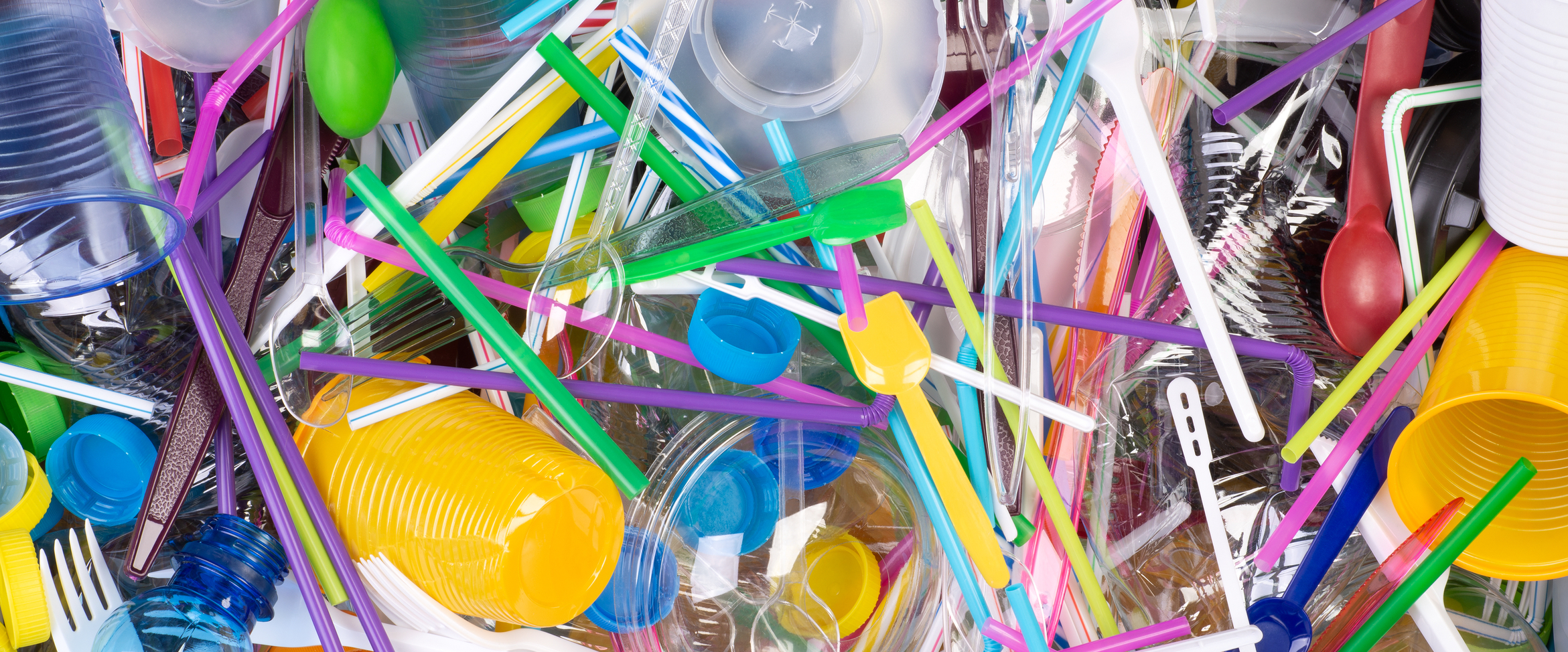Plastic-reduction has been at the forefront of collective sustainability efforts for some time. From plastic drinking straws to sanitary products, alternative, recyclable materials are widely being encouraged in place of single-use plastics. But, whilst straws may seem an obvious source of plastic waste, there are several other, more unexpected places that plastics can pop up.
As an agency, we are dedicated to making our business practices carbon friendly. Our mantra is ‘a passion for creativity, a mind for innovation and a heart for the environment’. We believe that as creatives we have a moral duty to design responsibly, whether it is the selection of materials, the body of work we undertake and the messages and behavioural changes that our work can achieve.
So, in recognition of Plastic Free July – a worldwide movement that encourages people to become part of the solution to plastic pollution – we have pulled together a list of some of the most surprising plastics offenders. We have also tried to provide some solutions as to how you can reduce your single-use plastic waste:
Tea bags
Did you know, tea bags contain micro plastics? They are often found in the sealant used to secure the bags. As approximately 96% of tea-drinkers use teabags, that is a lot of micro plastics being used on a daily basis!
Many of the leading UK tea brands are in the process of switching, or have recently switched, to using plant-based plastics like polylactic acid (PLA) instead of oil-based plastics in their sealants. PLA is a newer type of plastic that can be composted by local councils and authorities, making in significantly better for the environment than its predecessor (provided your tea bags go into the correct waste bins!)
You can cut down on microplastic usage by opting for loose leaf tea with a strainer, instead of using teabags. Alternatively, research brands of tea bags to see if they are plastic free. The Independent pulled together a handy guide to the best plastic-free teabag companies around.
Coffee Pods
Similar to teabags, coffee pods are something which need to be mindfully disposed of. For many of us, coffee pods and capsules have revolutionised our mornings. Whilst leading pod-producing companies often offer recyclable pods, not every pod brand is recyclable. Similarly, not every consumer is consciously recycling them, and many single-use pods end up in landfills.
Be sure to check the brands you are buying your pods from and that you are disposing of them as required. Alternatively, treat yourself to some beans and a cafetiere, and always remember your reusable coffee cup.
Chewing Gum
According to a survey carried out by Iceland, 85% of people asked didn’t realise there was plastic in chewing gum. Most gum that is available in stores have ‘gum base’ ingredients that are a combination of plastics and different chemicals. This includes polyethene – which can be found most commonly in plastic bags and bottles.
The plastic found in gum can have a negative impact on the environment; according to a report from The Metro, the stains left by gum thrown on to our streets contain microplastics. Those microplastics can then end up in drains that filter into the ocean.
Britons are the second biggest consumers of gum in the world, chewing an estimated 130 sticks per person each year. Chewing gum (made from plastic itself) can be swapped for plastic free alternatives such as Glee or Chewsy.
Cigarettes
Cigarettes are well known pollutants for our bodies, but the fact that they contain plastic is something often overlooked. Cigarette butts are one of the most common types of plastic garbage; filters are made from cellulose acetate, a plastic that can take as long as 10 years to decompose. It estimated that of the 6,5 trillion cigarettes are produced each year, over 90% of them contain plastic filters. This is more than one million tons of plastic. In addition, cigarettes are not always put into the bin and often end up on the ground or washed into our waterways, thus polluting the soil and water.
We worked with Keep Britain Tidy on a behavioural change campaign called #BinTheButt, challenging UK smokers to rethink how they dispose of their cigarettes. We developed across multiple channels including, print, outdoor, motion graphics for social media and a thirty second video ad to help educate people on the dangers cigarettes pose to marine life.
Receipts
Most receipts you get from shops are printed using a thermal paper coated in polycarbonate, a substance created using ‘BPA’. Polycarbonate is used as it adds strength and durability to the paper which is necessary for customers needing to return items or keep their accounts.
Unfortunately, in recent years, BPA has been identified as quite the nasty chemical that is harmful to our health and not easily degradable. A lot of stores now offer customers the option to have their receipt emailed to them which is a good option for many consumers. Similarly, online outlets like ASOS use QR codes to track and return items to limit plastic and paper usage.
The most obvious solution though is to decline receipts where possible; it is another piece of plastic that has no other place to go except landfill.
